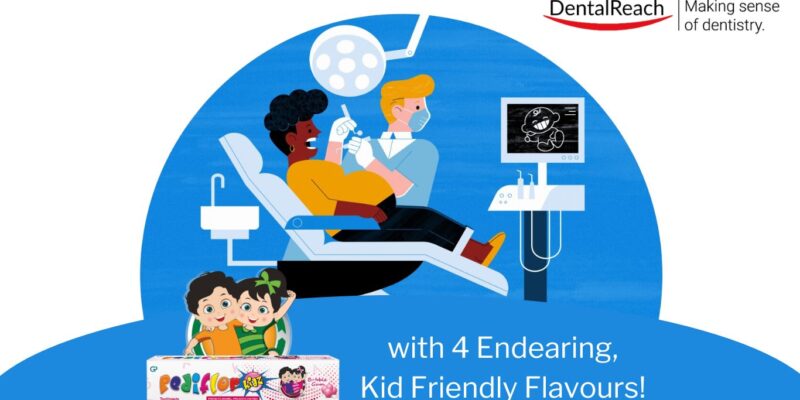Pregnancy takes a different shape for everyone and every body. While each person experiences pregnancy differently, these tips and suggestions are intended to make it easier for you to take care of yourself and your baby while simultaneously caring for your patients, your staff, and your dental practice.
Consulting Your Physician
One of the most crucial steps in managing your health during pregnancy is maintaining open communication with your physician. Here are some key points to consider:
- Consult Your Physician Regularly: If you have questions or if something just doesn’t seem right, consult your physician. You know your body best, and there’s no such thing as an inconsequential question.
- Share Your Job Description: Provide a copy of your job description to your physician. Include a checklist that details the physical aspects involved in treating patients—sitting, reaching, leaning, holding small instruments and tools. The impact of these demands may change as your pregnancy progresses.
- Follow Medical Advice: Adhere closely to the advice and recommendations given by your doctor. If you have concerns about their suggestions or if you’re having difficulty following them, let them know.
Ergonomics and Physical Therapy
During pregnancy, a female dentist’s body undergoes significant physiological changes that can affect their ability to perform routine tasks. Increased body weight, altered center of gravity, and swelling may necessitate modifications in posture and workstation setup.
Proper ergonomics are vital when practicing dentistry while pregnant:
- Ergonomic Practices: Pay attention to proper ergonomics while working. Stretch throughout the day to alleviate stress on muscles and joints. Place your feet on a small stool in between appointments. Ergonomic chairs with proper lumbar support and adjustable height can help mitigate discomfort.
- Physical Therapy: Participate fully in any prescribed physical or occupational therapy sessions.
Types of hazards at a dentists’ workplace
Some of the potential workplace hazards that dentists might face include:
- Infectious disease / bloodborne pathogens
- Laser/electrosurgery plumes
- Heavy metals (mercury)
- Nitrous oxide (waste anesthetic gases)
- Ionizing radiation (x-rays)
- Accidents (needle sticks, bites)
- Allergic reactions
- Physical strain
- Stress
- Chemicals (cleaning / disinfecting, dental sealants & tooth filling materials)
Although you may work around a potential hazard, it does not mean that you are exposed at levels that would cause a problem. There are safety measures that dentists can take to limit exposures.
X- rays: To be Exposed to Them or Not?
Properly maintained x-ray equipment that is used with proper techniques does not expose dental personnel to x rays, whether they are pregnant or not. The recommendation by some regulating agencies is that exposure should not be more than 0.05 rads in any one month of the pregnancy.
X-ray exposure of less than 5 rads has not been associated with an increased chance for birth defects over the background risk. However, radiation doses greater than 5 rads in the first two weeks of the pregnancy, before the egg implants into the uterus, might increase the chance for miscarriage.
For context, it has been estimated that it would take about 50,000 dental x-rays to build up a cumulative exposure dose of 5 rads.
Exposure to high doses (more than 50 rads) of radiation could be harmful to a pregnancy. These high dose exposures have been associated with small head size and poor fetal growth. In addition, exposure to more than 10 rads of radiation between the 8th week and the 15th week of pregnancy might be associated with learning difficulties and intellectual disability in the child.
Below are some general tips:
- Keep the time of exposure as short as possible.
- Maximize your distance from the source of exposure.
- Shield yourself from the source of exposure by:
–Using appropriate personal protective equipment (such as lead gloves and aprons);
–Standing the appropriate distance from the machine, or be out of the room or behind the appropriate shielding walls; and
–Not standing in a direct line from a machine’s beam source.
- Wear a personal radiation monitoring badge (dosimeter).
- Check to see if equipment is standardised as required; including machines and protective gear, such as lead aprons.
- Store lead aprons properly by hanging on an approved hanger (do not fold or crease).
- In extreme situations in which you cannot avoid being in the room while x-rays are being taken, use a mobile shield or wear a protective apron with appropriate thickness. Make sure the apron can wrap around the body and has full coverage of the abdomen. In addition, use lead goggles, gloves and shields.
Conscious Sedation Users and Pregnancy
Analgesia machines for dentistry are designed to deliver up to 70% (700,000 ppm) N2O to a patient during dental surgery, but in most cases, patients receive 30- 50% N2O. The most common route of N2O delivery and exhaust is through a nasal scavenging mask applied to the patient.
If nitrous oxide is used properly, including use of scavenging equipment and correct technique, then it is unlikely to cause a higher chance of miscarriage or birth defects in a pregnant dental professional. In addition, nitrous oxide is not expected to get into breastmilk. Air monitoring can be done to evaluate staff exposure if there is a concern about air levels in the office.
Some studies have found that exposure to anesthetic agents including halothane may cause adverse pregnancy outcomes in health-care personnel. But unless the procedure is performed under general anesthesia in an OR, halogenated anesthetics are not administered in dentistry.
Preventing Exposure to Infectious Diseases in the Clinic
Workers who are pregnant or breastfeeding should follow the same standard precautions established for all workers to prevent exposure to pathogens that can be spread by blood, saliva, or other body fluids. These precautions include:
- proper hand washing and
- the use of protective equipment like gloves and facemasks.
Proper hand washing entails:
- Wash hands before and after each patient and after contact with any bodily substance or articles contaminated by them.
- Wash hands before eating or drinking; after cleaning equipment and rooms; after handling chemicals; and whenever hands are visibly soiled.
Additional prevention may include:
- high volume suction
- secondary air evacuation and
- chair side traps.
Make sure the ventilation / air exchange in your workspace is working properly.
Make sure you are up to date on all recommended immunizations. Dentists are considered at high risk for acquiring or transmitting:
- hepatitis B
- Covid-19
- influenza
- measles
- mumps
- rubella
- pertussis (whooping cough) and
- varicella (chickenpox) .
Safety of Filling Materials for Pregnant Professionals
Most filling materials are safe for use by pregnant professionals. The point of concern is usually in use of dental amalgam. Available reports have not indicated a mercury-associated increase in birth defects or adverse neurologic effects in children of dentists or their assistants.
But studies have shown that blood mercury levels in workers are increased among those who work in practices with lower standards of work safety and hygiene. With proper workplace practices and precautions, mercury can be used. Since vaporized mercury is easily absorbed through the lungs and across the skin, it is important for all workers in the office to follow proper safety control procedures when working with and disposing of dental amalgams.
Dental workers can learn about chemicals and metals used at the clinic by reading the product Safety Data Sheet (SDS) provided with each material.
Self-Care Strategies
Taking good care of yourself along with your patients, is one of the best things you can do for both you and your baby. Follow these self-care strategies:
- Nutritious Diet: Eating a balanced diet rich in essential nutrients supports both maternal health and fetal development.
- Exercise: Engage in prescribed amounts of exercise or physical activity as recommended by your healthcare provider. Engage in work-life balance to incorporate the same.
- Rest: Ensure you get enough rest. Pregnancy can often result in increased fatigue; consider placing a sofa or chaise lounge in a private area where you can schedule rest breaks between patients throughout the day.
- Oral Health Care: Pay attention to changes in your own oral health such as pregnancy gingivitis, benign oral gingival lesions, tooth mobility, tooth erosion, dental caries, and periodontitis.
Mental Health Awareness
Balancing workload while managing pregnancy-related fatigue is essential for maintaining overall health. Maintaining good mental health is equally important as physical health during pregnancy:
- Monitor Mental Health: Be alert to thoughts or feelings that might indicate depression such as unusual sadness or anxiety. Counselling patients at length can be an emotionally exhausting task, limit verbal interactions to explanations and instructions instead of lengthy personal chats and discussions. Open communication with colleagues about workload distribution can ensure a supportive work environment.
- Seek Support Early: Depression can begin at any time during pregnancy—not just post-partum. Seeking help early allows you to learn coping strategies that can benefit you throughout pregnancy, and help in maintaining your sanity at your workplace too.
- Practice Well-Being: Regular breaks, hydration, and stress-reducing practices like prenatal yoga contributes to well-being.
Conclusion
Practicing dentistry while pregnant involves balancing personal well-being with professional responsibilities. By consulting with healthcare professionals regularly, adhering to medical advice, focusing on self-care practices including nutrition and rest, maintaining ergonomic practices at work, monitoring mental health closely, seeking support when needed, and utilizing available resources effectively—you can ensure both a healthy pregnancy journey for yourself and continued quality care for your patients.
Remember that taking care of yourself is paramount; it enables you to continue providing excellent care within your practice while nurturing the new life growing inside you.
References
- Mother To Baby | Fact Sheets [Internet]. Brentwood (TN): Organization of Teratology Information Specialists (OTIS); 1994-. Working in a Dental Office. 2023 Aug. Available from: https://www.ncbi.nlm.nih.gov/books/NBK582661/
- ADA resources – guidelines for practicing while pregnant – https://www.ada.org/en/resources/practice/practice-management/practicing-dentistry-while-pregnant
- Resources by the Center for Disease Control and Prevention – guidelines for infection control in dental health care settings – https://www.cdc.gov/mmwr/preview/mmwrhtml/rr5217a1.htm.




















Comments